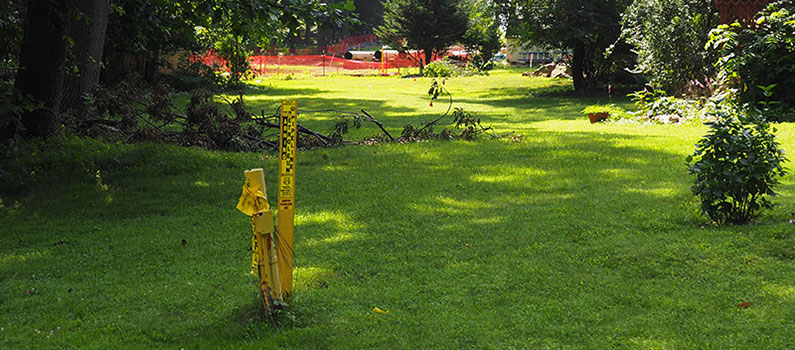 How to Link Your Website to the Pipeline Information Center
How to Link Your Website to the Pipeline Information Center
For our planning partners who would like to provide a link from their website directly to the Pipeline Information Center, please view instructions for logos and links.
 Pipeline Information Center Brochure
Pipeline Information Center Brochure
A brochure describing the information on the PIC website is available for anyone interested in learning more about pipelines. View Brochure
If your municipality or group would like printed copies of the brochure, please contact us at ccpipelines@chesco.org.
 Pipeline Information Center Promotional Posters
Pipeline Information Center Promotional Posters
Pipeline Information Center posters are available for printing and posting in your municipal building.
 Finding Pipeline Easements
Finding Pipeline Easements
To get detailed information about a specific parcel, you should contact the Chester County Recorder of Deeds and provide them with the parcel number of the property you wish to learn more about. The Recorder of Deeds can also help you locate a deed and determine if a pipeline company holds an easement on it.
 811 Hotline
811 Hotline
811 is the national number designated to protect landscapers/contractors from unintentionally hitting underground utility lines while working on digging projects. 811 helps access locator services in order to mark the approximate location of underground lines, pipes and cables, in order to dig safely. Visit Website
 Pipeline Safety Coalition
Pipeline Safety Coalition
The Pipeline Safety Coalition (PSC) is a non-profit organization that focuses on improving public, personal, and environmental safety in pipeline issues. PSC provides equal access to information, community mentoring and facilitating respectful and productive communication between all parties involved in pipeline issues. The PSC provides information for landowners and communities, and also provides resources, information on pipeline basics, and pipeline safety education and has developed a Chester County Preparedness & Emergency Response Guidebook.
 Resources for Landowners
Resources for Landowners
A wide range of resources has been assembled for landowners impacted by pipelines, including information about pipeline rights-of-way and easement agreements. View Resources
Pipeline Land Use Planning and Model Ordinances for Pennsylvania Municipalities — rev. 2014
The following information was developed by Gaadt Perspectives, LLC as a regulatory approach tailored to this region of Pennsylvania and consistent with PA Municipalities Planning Code. The process undertaken to develop this information and related legal review is described in the "Introduction to Planning Near Pipelines" section below.
Courtesy of Gaadt Perspectives, LLC.
Introduction to Planning Near Pipelines
Municipalities can use their land-use planning, regulatory and permitting authority to reduce the potential risks to people and property near existing and proposed pipelines. A four-part strategy is recommended that addresses:
- Surface land uses associated with pipelines (but not the below-ground interstate transmission pipelines themselves, which are generally outside the regulatory reach of local municipalities),
- Street opening standards that address the permitting and design of street excavation and other street-related activities associated with pipelines,
- Land use regulations that apply to new development near pipelines, and
- Municipal comprehensive planning, which will provide the rational nexus that links municipal policy and regulation.
While the standards provided in these model ordinances have been reviewed by an experienced municipal solicitor, we recommend that, as with any ordinance standards, municipalities work with their solicitor prior to amending their local ordinances. View Introduction
Street Opening Model Ordinance
Pipeline construction will usually require street excavation. The types of excavation necessary for pipeline construction can involve deeper or wider trenching and specialized techniques to ensure public safety. Municipalities can use this model ordinance to ensure that street excavations are performed properly and the street is returned to an appropriate condition upon the completion of the work. View Model Ordinance
Standards for New Development Proposed Near Transmission Pipelines
These regulations are intended to promote public safety by ensuring that new developments, especially those with high populations, which are proposed near existing pipelines are adequately separated from the pipeline corridor, that landscaping is provided to help screen views of the pipeline area, and other safety measures are included.View Standards
Standards for Surface Land Uses Affiliated with Transmission Pipelines
These standards address surface uses that are proposed in conjunction with transmission pipelines. Their purpose is to minimize aesthetic, nuisance, and visual impacts of these uses through proper design, siting, and vegetative screening. They are also intended to ensure that surface land uses are in compliance with industry standards as well as state and federal regulations. View Standards
Potential Impact Radius and Pipeline Class Locations
Pipelines of different sizes can carry different amounts of products and at different pressures. This section includes a graph that compares a pipeline's maximum pressure with the pipeline's diameter, and then identifies a horizontal area near the pipeline that can be adversely influenced in the event of a pipeline accident. The area that is shown on the graph should receive special attention for land use planning and permitting. View Impact Radius
Comprehensive Plan Language for Transmission Pipelines
Municipalities that want to adopt land use regulations associated with gas transmission pipelines should first adopt planning policies that support such regulations. The municipal comprehensive plan should include language that recognizes the potential for pipeline construction, as well as the potential land-use consequences of a pipeline incident, and the municipality's intention to protect the public's health, safety and welfare through the adoption of pipeline-related regulations. View Plan Language
Chester County Association of Township Officials - Pipeline Guidelines for Municipalities
The Chester County Association of Township Officials (CCATO) has developed a "Guide to Pipelines for Chester County Municipalities" which is located in the Resources Section of their website. The Guide provides an outline of basic pipeline terms, an overview of who regulates pipeline siting and safety, and tools for municipalities to gain information early in the planning of pipeline projects. The CCATO Resources page also provides a link to examples of municipal pipeline ordinances. Three pipeline presentations that were developed under the 2014 CCATO's PHMSA Technical Assistance Grant, including one specifically relating to pipelines and the role of municipalities in the zoning and land planning are located on the CCATO website.
 PHMSA's Land Use Planning and Transmission Pipelines page
PHMSA's Land Use Planning and Transmission Pipelines page
This website is provided by the US DOT's Pipeline and Hazardous Materials Safety Administration to provide information for pipeline safety stakeholder communications, and provides information on Pipelines and Informed Planning Alliance (PIPA) as well as individual state pipeline profiles. State pipeline information can be viewed in the left column after clicking on the "toolbox" icons at the bottom of the page. Visit Website
 Hazard Mitigation Planning: Practices for Land Use Planning and Development Near Pipelines, Pipelines and Informed Planning Alliance (PIPA), 2015
Hazard Mitigation Planning: Practices for Land Use Planning and Development Near Pipelines, Pipelines and Informed Planning Alliance (PIPA), 2015
This document provides a framework for State and local governments to utilize the hazard mitigation planning process to examine ways, through their own authorities, to further reduce the risks to their communities associated with hazardous liquid and gas transmission pipeline failures. While the authority to prescribe safety standards for transportation pipelines and pipeline facilities generally falls to PHMSA, local governments can use their land use and development authorities to influence what, where, and how to build near existing transmission pipelines and to implement hazard mitigation strategies. This includes mitigation measures a jurisdictional government might consider including in its hazard mitigation plan to address pipeline hazards. View Document
 Planning for Legacy Pipelines
Planning for Legacy Pipelines
How to cope with aging and abandoned energy infrastructure: a Planning Practice story by Tom Burns and Tan Hoang. Article courtesy of APA, Planning Magazine, December 2013. Posted with permission. View Article
 Building Safe Communities: Pipeline Risk and its Application to Local Development Decisions
Building Safe Communities: Pipeline Risk and its Application to Local Development Decisions
The purpose of this report is to assist local governments and developers in better understanding pipeline risks and to provide a context for the use of recommended practices for development near hazardous liquid and gas transmission pipelines. Developed by the Pipeline and Hazardous Materials Safety Administration of the U.S. Department of Transportation. View Report
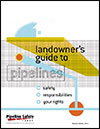 Landowner's Guide To Pipelines
Landowner's Guide To Pipelines
The guide was developed by the Pipeline Safety Trust, Bellingham, Washington. It provides basic information about the pipeline system, how pipelines are operated and regulated, what rights a landowner has and where to find more information. View Guide
 Local Government Guide to Pipelines
Local Government Guide to Pipelines
The guide was developed by the Pipeline Safety Trust, Bellingham, Washington. It provides basic information about pipeline systems. Similar to the Landowner guide, however, focused on what local governmental roles are in planning for development around existing lines, accident prevention, planning for new pipelines, and where to find more information about these topics. View Report
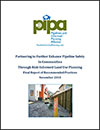 Enhancing Pipeline Safety Through Land Use Planning: PIPA Final Report
Enhancing Pipeline Safety Through Land Use Planning: PIPA Final Report
This publication was provided by the Pipelines and Informed Planning Alliance (PIPA), Washington, DC. View Report
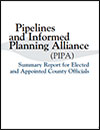 PIPA Summary Report for Elected Officials
PIPA Summary Report for Elected Officials
This report, issued by PHMSA as part of their Pipeline and Informed Planning Alliance, is a summary report of key pipeline safety actions that can be taken by elected and appointed officials. View Report
 Transmission Pipelines and Land Use
Transmission Pipelines and Land Use
This publication was provided by the Transportation Research Board, Washington, DC. View Report
Pipelines and Water Resources Protection
This fact sheet serves as a guide to issues related to natural gas and petroleum pipelines, water resources protection, and municipal regulatory authority and a current case dealing with pipeline activities in Pennsylvania.
Source: Gaadt, John. Pipelines and Water Resources Protection 177 (2015): 8-12. Reprinted from "The Vantage Point: A Publication of the Pennsylvania Chapter of the American Planning Association."
What is Marcellus Shale?
The Pennsylvania Department of Conservation and Natural Resources has a section on Marcellus Shale, including an FAQ section that discusses what the shale is, where it is located, how deep it is found, mapping and other aspects of this industry. View Website
Penn State Marcellus Center for Outreach and Research
Penn State University has an educational and research initiative on unconventional gas plays called The Marcellus Center for Outreach and Research (MCOR). This site is intended to serve state agencies, elected officials, communities, landowners, industry, and environmental groups. Their goal is to expand research capabilities on technical aspects of developing the Marcellus shale resource. View Website
Shale Gas Knowledge Hub
 This is a project undertaken by the Washington & Jefferson College Center for Energy Policy and Management with the funding and support of the Richard King Mellon Foundation. The mission of the Knowledge Hub is to be a source of objective information about shale gas development in southwestern Pennsylvania so that the citizens of the region can better understand the risks and opportunities presented by the development and make informed decisions about it. Regular updates about the activities of the Shale Gas Knowledge Hub are available through their mailing list. View Website
This is a project undertaken by the Washington & Jefferson College Center for Energy Policy and Management with the funding and support of the Richard King Mellon Foundation. The mission of the Knowledge Hub is to be a source of objective information about shale gas development in southwestern Pennsylvania so that the citizens of the region can better understand the risks and opportunities presented by the development and make informed decisions about it. Regular updates about the activities of the Shale Gas Knowledge Hub are available through their mailing list. View Website
Northeast Gas Association
 The Northeast Gas Association (NGA) is a regional trade association, focused on education and training, technology research and development, operations, planning, and increasing public awareness of natural gas in the Northeast US. NGA represents natural gas distribution companies, transmission companies, liquefied natural gas importers, and associate member companies, who provide natural gas to over 12 million customers in the nine state region. View Website
The Northeast Gas Association (NGA) is a regional trade association, focused on education and training, technology research and development, operations, planning, and increasing public awareness of natural gas in the Northeast US. NGA represents natural gas distribution companies, transmission companies, liquefied natural gas importers, and associate member companies, who provide natural gas to over 12 million customers in the nine state region. View Website
Marcellus Shale Coalition
 The Marcellus Shale Coalition (MSC) works with exploration and production, midstream, and supply chain partners in the Appalachian Basin and across the country to address issues regarding the production of American natural gas from the Marcellus and Utica Shale plays. They provide information to policymakers, regulators, media, and other public stakeholders on the impacts of responsible natural gas production and have numerous information sheets, studies, reports, and presentations on their website. Two Fact Sheets that residents and property owners may find of particular interest are their Pipeline and Midstream Facilities Fact Sheet and their Pipeline Oversight Fact sheet. View Website
The Marcellus Shale Coalition (MSC) works with exploration and production, midstream, and supply chain partners in the Appalachian Basin and across the country to address issues regarding the production of American natural gas from the Marcellus and Utica Shale plays. They provide information to policymakers, regulators, media, and other public stakeholders on the impacts of responsible natural gas production and have numerous information sheets, studies, reports, and presentations on their website. Two Fact Sheets that residents and property owners may find of particular interest are their Pipeline and Midstream Facilities Fact Sheet and their Pipeline Oversight Fact sheet. View Website
Association of Oil Pipe Lines (AOPL)
 The Association of Oil Pipe Lines, established in 1947, represents the interests of owners and operators of America's liquid pipelines, which bring crude oil to refineries and petroleum products to communities including gasoline, diesel, jet fuel, home heating oil, kerosene, propane, and biofuels. The AOPL also serves as an information clearinghouse, testifies before congressional committees and implements the Pipeline Safety Excellence Initiative.
The Association of Oil Pipe Lines, established in 1947, represents the interests of owners and operators of America's liquid pipelines, which bring crude oil to refineries and petroleum products to communities including gasoline, diesel, jet fuel, home heating oil, kerosene, propane, and biofuels. The AOPL also serves as an information clearinghouse, testifies before congressional committees and implements the Pipeline Safety Excellence Initiative.
Pipeline Research Council International (PRCI)
 The Pipeline Research Council International (PRCI) is an organization made of pipeline companies, vendors, service providers, equipment managers and other organizations. The PRCI utilizes a collaborative model of member and external funding, information sharing, and cooperative project development in an effort to provide efficient and energy pipeline research and development and project and equipment deployment.
The Pipeline Research Council International (PRCI) is an organization made of pipeline companies, vendors, service providers, equipment managers and other organizations. The PRCI utilizes a collaborative model of member and external funding, information sharing, and cooperative project development in an effort to provide efficient and energy pipeline research and development and project and equipment deployment.
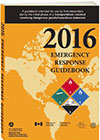 First Responder Emergency Response Guidebook
First Responder Emergency Response Guidebook
The Pipeline and Hazardous Materials Safety Administration (PHMSA) developed this Emergency Response Guidebook, to provide first responders with a "go to" manual to help deal with hazmat accidents during the first 30 minutes. View Guide
 FERC Stakeholder Guide
FERC Stakeholder Guide
The Federal Energy Regulatory Commission (FERC) recognizes that the development of stakeholder outreach programs have become increasingly important, as stakeholders offer valuable insight that can ultimately improve infrastructure projects and meet the public demand for energy. As a result, FERC has issued this industry guidance document to present best practices and to highlight tools that FERC believes can be used to most effectively engage stakeholders in the application process for siting, construction and operation of interstate natural gas facilities. View Document


